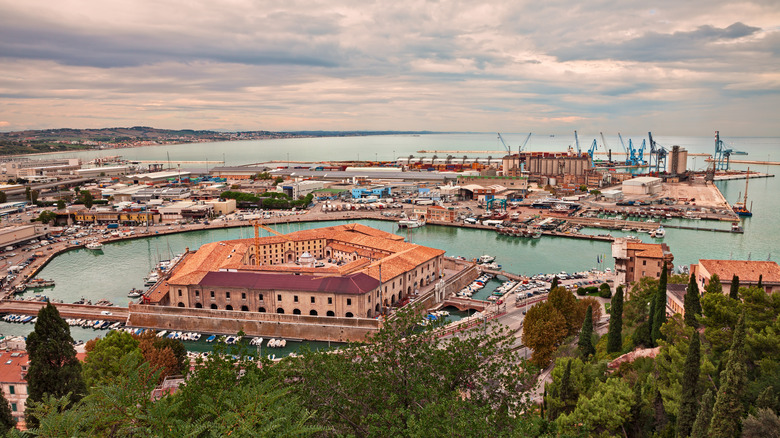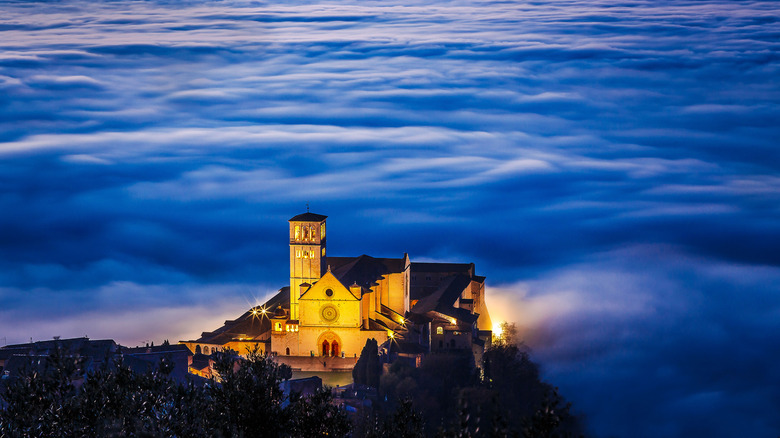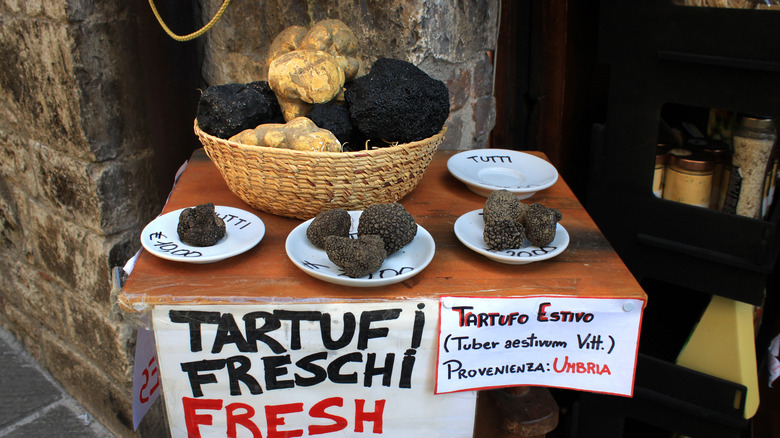The Most Underrated Destinations In Italy, According To Stanley Tucci
Looking for the most underrated destination in Italy is like looking for a hidden gem in a treasure chest full of them. On top are, of course, Rome's ancient ruins, Venice's romantic gondola rides, and Naple's iconic foods. Yet, beyond these jewels are parts of Italy that remain unscathed by the reckless masses of tourists. According to Stanley Tucci, the renowned actor, travel show host, and food enthusiast, two such hidden gems are the regions Umbria and Le Marche.
Umbria, coined the "green heart of Italy," is snuggled comfortably in the middle of the Italian boot, right between Rome and Florence. Although this region is often overshadowed by its famous neighbor, Tuscany, travelers can expect a landscape just as rich. With its rolling hills and peaking valleys, there are plenty of towns to explore and choose from, each with a unique story. You may be familiar with towns like Assisi or perhaps the capital, Perugia, with its medieval and romantic charms.
To the east of Umbria, bordering San Marino, lies Le Marche. This region stretches from the Apennine Mountains to the Adriatic Sea and can best be described as sublimely mountainous with a steep descent to the sea — plus, it has some of Italy's best hidden beaches. Within its five provinces are picturesque towns that have historic roots and a slow-paced lifestyle. Ancona, the regional capital, is where the sun rises and sets over the sea, and it has been an important port city dating to ancient Greek and Roman times.
Umbria and Le Marche, Italy
Although these regions are only an hour and a half away by car and 75 miles apart, they have distinct cultures and histories. Umbria is particularly special because it's the only landlocked region in Italy that does not border another country, protecting itself from outside influences, whereas Le Marche is the exact opposite. Umbria begins antiquity with pre-Etruscan Italic people (before the fifth and sixth centuries) inhabiting the area. Then came the Roman, Medieval, Renaissance, and current time periods, all of which can be seen, heard, and felt within. So much of Umbria is preserved. Take the town of Assisi, the birthplace of the revered St. Francis, where you can visit his namesake basilica, built in the 13th century. Or indulge in artisanal crafts like pottery and ceramics in a town like Deruta, where they have been produced since the Middle Ages.
Le Marche inhabitants also date back to an Iron Age period, undergoing many changes throughout the centuries, from the Piceni to the Byzantines. However, during the Renaissance, Le Marche seemed to find itself within itself, where it became a center for art and learning, raising artists such as Raphael. You can find some of his work in the Galleria Nazionale delle Marche. Moreover, Le Marche still carries a strong literary and musical heritage as the birthplace of some of Italy's greatest, like poet Giacomo Leopardi and composer Gioachino Rossini. Visit Macerata to experience opera at the Sferisterio, an 1819 outdoor theatre showcasing some of Italy's best operas every year.
Regional cuisine in Umbria and Le Marche
Stanley Tucci has become one of the most popular celebrities showcasing the diversity of food in Italy with his show, "Searching for Italy." In Season 2, Episode 3, Tucci actually visits Umbria to discover its cuisine. Umbria is most famous for black truffles — you can only imagine its local dishes utilizing such a valuable ingredient. Try pasta alla norcina, a thin pasta dish perfected with onion, garlic, pork sausage, ricotta, pepper, and the namesake town's black truffle. Or take Tucci's advice and go for cinghiale (wild boar) ragù. This meat sauce is first slow-cooked with fragrant herbs, lemon, and some Italian vinegar until minced and mixed with tomato sauce and green olives over pappardelle pasta.
Although he doesn't feature Le Marche in the show, he does mention it in a TikTok, acknowledging it as one of Italy's most underrated. Food-wise in Le Marche, the influence of its industrial Mediterranean port is ever-present — travelers can expect lots of fresh seafood. Famous dishes include moscioli alla marinara, a dish of wild, naturally-growing seasonal mussels, or brodetto di pesce, a fish stew of tomato broth, wine, and garlic with a delicious flavor that varies depending on the city. If the land is calling your name, try vincisgrassi, a circa-1799 traditional dish similar to lasagna. Its recipe includes seven layers of hand-rolled pasta, ragù, and lots of béchamel. As with all of Italy's hidden gems, the best ones are always rich in history, culture, and delicious cuisine.


